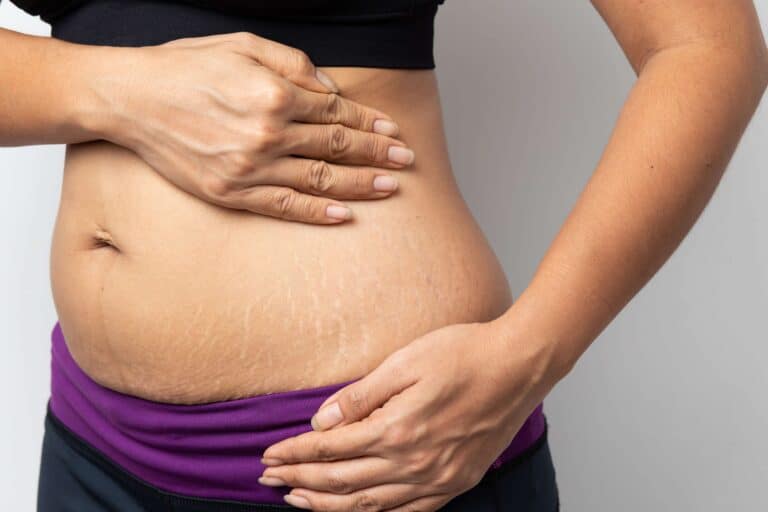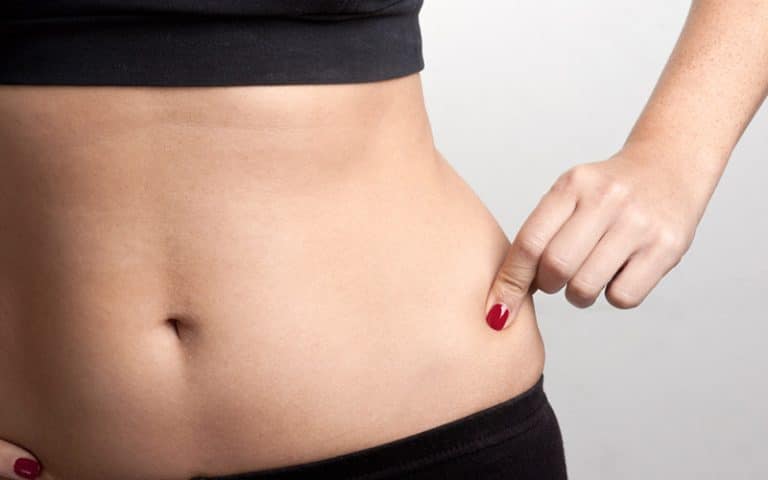Facial Fat Grafting Longevity: Key Factors for Lasting Results
Did you know that over 50% of people who undergo facial fat grafting report lasting results for five years or more, as reconstructive surgeons with surgical expertise answer questions patients have? Facial fat grafting longevity is a hot topic in cosmetic surgery, and during the postoperative visit, the doctor may answer questions about the procedure, including concerns that patients might have about their ear. This procedure not only enhances your features but also offers a natural look, answering everything your doctor needs, including your ear. Many are curious about how long the effects truly last, what factors influence this durability, and what a doctor might say about it in their ear.
Understanding the science behind facial fat grafting with your doctor can help you make informed decisions. Factors like age, lifestyle, and technique play significant roles in the outcome. In this post, we’ll dive into what affects the longevity of your results and share tips to maximize your investment. Get ready to discover how to keep that youthful glow for as long as possible!
What is Facial Fat Grafting?
Facial fat grafting is a cosmetic procedure that transfers fat from one part of the body to the face. This method helps enhance facial volume and improve contours. Many people choose this treatment to restore youthfulness or achieve a more balanced appearance.
The process begins with liposuction. A surgeon removes fat from areas such as the abdomen or thighs. After harvesting, the fat undergoes purification. This step ensures that only healthy fat cells are used for injection. Once purified, the fat is injected into specific areas of the face.
Common target areas for facial fat grafting include the cheeks, lips, and under-eye regions. These areas often lose volume with age. By adding fat, patients can achieve a fuller look. This can also reduce the appearance of wrinkles and fine lines.
Fat grafting offers several advantages over other cosmetic procedures. One major benefit is that it uses the patient’s own tissue. This reduces the risk of allergic reactions or complications. The results can last for years, but individual experiences vary.
Recovery after facial fat grafting is typically quick. Patients may experience some swelling and bruising. These effects usually subside within a week. Most individuals return to normal activities shortly after the procedure.
Fat grafting can also be combined with other procedures. For example, it may enhance results from rhinoplasty or facelift surgeries. Surgeons often use it to improve nasal contour by adding volume around the nose area. This can create a more balanced appearance.
Patients should have realistic expectations about their results. While many see significant improvements, outcomes depend on various factors. These include skin quality and overall health. Discussing goals with a qualified surgeon is essential.
Long-term studies show that some of the transferred fat will be absorbed by the body over time. However, a portion remains permanent, providing lasting benefits. Patients often enjoy improved facial aesthetics for years after treatment.
In summary, facial fat grafting is an effective way to rejuvenate the face using natural tissue. It involves careful planning and execution by trained professionals. Choosing the right surgeon is crucial for achieving desirable results.
Are Facial Fat Transfer Results Permanent?
Longevity of Results
Facial fat transfer can provide long-lasting results. Many patients enjoy their new look for years. However, these results are not necessarily permanent. Over time, the body may reabsorb some of the transferred fat cells. This process can lead to a gradual decrease in volume.
Studies show that about 30% to 50% of the injected fat can survive long-term. Factors such as age, health, and lifestyle choices affect how much fat remains. Younger patients often retain more fat than older ones. Healthy habits like regular exercise and a balanced diet can help maintain results.
Reabsorption Process
The body naturally breaks down and absorbs some of the fat cells after injection. This is a normal part of the healing process. Initially, the body treats the newly injected fat as a foreign substance. It sends immune cells to break down any cells that it does not recognize.
Over time, some of these fat cells establish a blood supply. Those that survive become a permanent part of the treated area. However, not all injected fat will survive this transition. Patients may notice changes in volume after several months.
Multiple Sessions Needed
To achieve optimal results, multiple sessions might be necessary. Some patients require touch-ups to maintain their desired appearance. Each session allows for additional grafting of fat to enhance volume.
Surgeons assess how much fat has survived during follow-up visits. They can suggest further procedures if needed. This approach helps ensure that patients achieve the best possible outcome.
Individual Factors
Individual factors play a significant role in the longevity of facial fat grafting results. Genetics, skin elasticity, and lifestyle choices impact how well the treatment lasts. For instance, smokers may experience reduced blood flow to tissues, affecting fat survival.
Patients should also consider their overall health before undergoing the procedure. Pre-existing conditions can influence recovery and results. Consulting with a qualified surgeon is essential to understand personal risks and benefits.
Factors Affecting Fat Graft Longevity
Surgeon Skill
The surgeon’s skill and technique play a crucial role in fat graft longevity. An experienced surgeon understands how to harvest, process, and inject fat effectively. Proper harvesting minimizes trauma to the fat cells, which helps them survive after transfer.
Techniques vary widely among surgeons. Some use specialized tools that enhance cell viability. Others may rely on traditional methods that could compromise results. A skilled surgeon also considers the anatomy of the face. They assess where to place the fat for natural-looking results. Choosing the right professional is essential for achieving lasting effects.
Patient-Specific Factors
Age, lifestyle, and skin quality are significant factors in fat graft longevity. Younger patients often have better skin elasticity and overall health. This can lead to improved outcomes and longer-lasting results. Older patients may experience less favorable conditions due to reduced skin elasticity and facial volume.
Lifestyle choices also impact results. Smoking, excessive sun exposure, and poor diet can harm skin quality. These factors can lead to faster aging and diminished graft survival. Patients who maintain a healthy lifestyle tend to see better results over time.
Skin quality is another vital component. Thicker skin may retain fat better than thinner skin. Those with good skin tone often enjoy longer-lasting effects from facial fat grafting.
Post-Operative Care
Post-operative care significantly influences the longevity of fat grafts. Following surgical instructions is essential for optimal recovery. Patients should avoid strenuous activities for several weeks after surgery. This allows the body to heal properly without disrupting the newly transferred fat.
Hydration plays a key role in recovery as well. Drinking enough water helps maintain skin elasticity and overall health. Patients should follow a balanced diet rich in vitamins and minerals to support healing.
Regular follow-up appointments with the surgeon are important too. These visits allow for monitoring progress and addressing any concerns early on. Surgeons can provide tailored advice based on individual healing patterns.
In summary, various factors affect the longevity of facial fat grafts. The surgeon’s expertise is paramount for successful outcomes. Patient-specific elements like age and lifestyle also play significant roles in determining how long results last. Finally, diligent post-operative care ensures that patients maximize their investment in cosmetic procedures.
Surgical Techniques and Their Impact
Fat Harvesting
The method of fat harvesting significantly affects the longevity of grafts. Surgeons use various techniques to extract fat from donor sites, such as liposuction. The quality of harvested fat depends on the technique used. Gentle suction minimizes damage to fat cells. This preserves their viability, leading to better outcomes.
Purification of the extracted fat is equally important. Techniques like centrifugation or filtration remove unwanted fluids and debris. This process enhances the quality of the graft. Cleaner fat cells have a higher chance of survival after injection.
Injection Techniques
Precise injection techniques play a crucial role in determining the success of facial fat grafting. Surgeons must inject the fat into specific layers of tissue. This ensures proper integration with surrounding tissues. If injected too deep or too shallow, fat cells may not survive.
Surgeons often use small syringes for injection. This allows for better control and accuracy. They also apply a technique called “lateral dispersion.” This spreads the fat evenly within the targeted area. Such precision increases blood supply to the grafted fat, promoting its longevity.
Advanced Techniques
Advanced surgical techniques can improve fat cell survival rates significantly. Some surgeons employ methods like microfat and nanofat grafting. These involve smaller particles of fat, which integrate more easily into the tissue.
Research shows that using these advanced techniques leads to better outcomes compared to traditional methods. The systematic review indicates that patients experience fewer complications and improved results with these approaches.
Reconstructive surgeons often face complex surgeries where maximizing graft longevity is essential. Understanding various techniques allows them to tailor treatments based on individual clinical scenarios.
Postoperative Care
Postoperative care is vital for ensuring the success of facial fat grafting procedures. Patients should follow procedure care instructions provided by their surgeon closely. Proper care includes avoiding strenuous activities for several weeks post-surgery.
Regular postoperative visits help monitor recovery and detect any potential complications early on. Surgeons can address issues promptly, reducing risks associated with extensive surgery.
Complications Overview
Several complications can arise from facial fat grafting, including infection or uneven results. Patients should be aware of these risks when considering treatment options. Discussing potential complications with a surgeon helps set realistic expectations.
In summary, understanding surgical techniques is key to enhancing the longevity of facial fat grafts. From harvesting methods to precise injection techniques, every detail matters in achieving successful outcomes.
Longevity of Facial Fat Transfer
Results Duration
Facial fat transfer can provide long-lasting results. Many patients enjoy the benefits for several years. The effects often last up to five years or more. In some cases, results can extend beyond this timeframe. Factors like age and skin quality influence longevity.
Patient Variability
Individual experiences with facial fat grafting may differ widely. Some patients report longer-lasting outcomes. Genetics, lifestyle choices, and overall health play significant roles. Each person’s body responds uniquely to the procedure. These variations make it essential for prospective patients to have realistic expectations.
Factors Influencing Longevity
Several factors affect how long the results of facial fat transfer last. The technique used during the procedure matters greatly. Surgeons who apply advanced methods tend to achieve better outcomes. Proper fat harvesting and placement enhance retention.
Another critical factor is the area treated. Regions with more movement, like around the mouth, may show changes sooner. Areas that are less mobile might retain fat longer.
Lifestyle choices also impact longevity. Patients who maintain a healthy diet and avoid smoking often see better results. Regular exercise can improve circulation and skin quality, contributing to lasting effects.
Maintenance Options
Patients can take steps to maintain their results after surgery. Regular skincare routines help keep skin healthy. Hydration is essential for maintaining elasticity. Using sunscreen protects against sun damage, which can affect appearance over time.
e individuals may choose follow-up procedures to enhance their results further. Additional fat grafting or fillers can complement initial treatments. Consulting with a qualified surgeon helps determine the best approach.
Real-Life Experiences
Many patients share positive stories about their experiences with facial fat grafting. One patient noted that her results lasted over seven years before she considered any touch-ups. Another individual highlighted how his facial volume improved significantly after the procedure and remained stable for years.
These testimonials reflect the potential for sustained improvements in appearance through facial fat transfer. However, each story emphasizes the importance of personal factors in determining outcomes.
In summary, facial fat grafting offers lasting benefits for many individuals. While most experience results lasting several years, some enjoy even longer durations. Individual experiences will vary based on multiple factors, including technique, lifestyle, and genetics.
Changes Over Time, Especially After 5 Years
Facial Volume
Patients often notice changes in facial volume after five years. The initial results may appear full and youthful. However, over time, the fat can be absorbed by the body. This absorption leads to a gradual decrease in volume.
e patients report that their faces look thinner as they age. This is a natural part of the aging process. Loss of facial fat can change contours and create a sunken appearance. Many patients express concerns about looking older than they feel due to these changes.
Aging Effects
Aging impacts everyone differently. It affects skin elasticity and bone structure. These factors can change how facial fat grafts settle over time. Patients may experience sagging skin or deeper wrinkles as they age. Weight fluctuations also play a role in how long the results last.
Weight loss can lead to further loss of facial fat. Gaining weight might not restore lost volume. Instead, it can cause uneven distribution of fat in the face. Doctors often emphasize the importance of maintaining a stable weight for optimal results.
Touch-Up Procedures
Many patients require touch-up procedures to maintain their desired appearance. These procedures help restore lost volume and improve contours. Doctors recommend these adjustments based on individual needs and circumstances.
Touch-ups can be done at various intervals, depending on each patient’s experience. Some people may need them every few years, while others might wait longer. Discussing this with a specialist is crucial for new patients. They should ask questions about what to expect in the future.

Common Concerns
New patients often have questions about potential issues after five years. Concerns may include fluid retention or asymmetry in their faces. Doctors address these symptoms during regular check-ups and exams.
Patients should communicate any changes they notice after surgery. This helps doctors assess whether touch-ups are necessary or if other treatments are needed. Understanding these common concerns allows patients to manage expectations effectively.
Common Misconceptions About Fat Grafting Longevity
Permanent Results
Many people believe that fat grafting results are always permanent. This misconception can lead to disappointment. In reality, fat transfer involves moving fat cells from one area of the body to another. Not all cells survive the process. Studies show that about 30-50% of transferred fat may be reabsorbed by the body over time.
The survival rate of fat cells depends on various factors. These include the method used for extraction and injection, as well as the recipient site’s blood supply. After the procedure, some fat cells may die due to lack of oxygen or nutrients. This means that while some results can last, they are not guaranteed to remain unchanged forever.
Cell Survival
Fat grafting is not a simple process. It involves complex biological reactions. Some people think that all transferred fat cells will thrive after surgery. However, studies indicate that only a portion of these cells will survive long-term. Research from the American Society of Plastic Surgeons shows that around 60-70% of injected fat can remain viable after six months.
Factors affecting cell survival include the technique used and individual patient characteristics. For example, smokers may have lower survival rates due to poor circulation. The area where fat is injected plays a role in how well the cells adapt and thrive.
Multiple Sessions
Another common myth is that one session is always sufficient for lasting results. Many patients expect their initial treatment to provide complete satisfaction without follow-up procedures. However, this isn’t often the case.
Surgeons frequently recommend multiple sessions for optimal outcomes. Each session helps ensure more fat cells survive and integrate into the surrounding tissue. The timing between sessions also matters; typically, surgeons suggest waiting at least three months before a follow-up procedure.
Realistic Expectations for Durability and Maintenance
Patient Mindset
Patients should have realistic expectations about the longevity of facial fat grafting results. Many factors influence how long the effects last. These include individual metabolism, lifestyle choices, and overall skin condition. Understanding these factors can help manage expectations.
Fat grafting does not provide permanent results. Over time, some of the transferred fat cells may be absorbed by the body. This means that results can diminish after a few months. Patients often need to schedule follow-up appointments to assess their progress.
Additional Treatments
e patients may require additional treatments to maintain their desired look. This is especially true if they notice significant volume loss over time. Surgeons may recommend touch-up procedures to enhance or restore volume.
Discussing the need for future treatments with your doctor is essential. They can provide guidance based on your specific situation and goals. Knowing this information helps patients plan effectively.
Healthy Lifestyle
Maintaining a healthy lifestyle plays a crucial role in prolonging results from facial fat grafting. Eating a balanced diet supports skin health and overall well-being. Regular exercise promotes good blood circulation, which can benefit skin elasticity.
Avoiding harmful habits is equally important. Smoking and excessive alcohol consumption can negatively impact skin quality. These choices may lead to premature aging, affecting the longevity of results.
Patients should also consider skincare routines that include moisturizing and sun protection. Using quality products can help maintain skin hydration and prevent damage from UV rays.
Importance of Care
Proper care after the procedure enhances results significantly. Following post-operative instructions from your surgeon ensures optimal healing. Patients should avoid strenuous activities for a short period after surgery.
Using recommended skincare products, such as gentle sprays or creams, can aid recovery. Keeping the skin hydrated helps maintain the volume achieved through fat grafting.
Tips for Maintaining Facial Fat Graft Results
Post-Operative Care
Following post-operative care instructions is crucial. Surgeons provide specific guidelines for recovery. These often include avoiding strenuous activities and following a healthy diet. Proper care helps the grafted fat settle in. Patients should avoid touching or massaging the treated area for several weeks. This minimizes the risk of displacing the fat.
Hydration plays a key role in recovery. Drinking plenty of water supports skin health and overall healing. Using prescribed medications as directed can reduce swelling and discomfort. These steps contribute to better long-term results.
Stable Weight
Maintaining a stable weight is essential for lasting results. Significant weight changes can impact the volume of grafted fat. If a person loses weight, the face may appear less full over time. Grafted fat cells can shrink, leading to a less desirable appearance.
Conversely, gaining weight may lead to an increase in facial fullness that looks unnatural. A balanced diet and regular exercise help keep weight steady. This approach ensures that the results of facial fat grafting remain consistent.
Regular Follow-Ups
Regular follow-ups with the surgeon are vital for monitoring results. These appointments allow surgeons to assess how well the graft has taken. They can identify any issues early on and recommend solutions. Many surgeons suggest visits at one month, three months, and six months post-procedure.
During these visits, patients can discuss their concerns about their appearance. Surgeons may provide additional treatments if necessary. Staying in touch with the healthcare provider ensures that patients stay informed about their progress.
Healthy Lifestyle Choices
Incorporating healthy lifestyle choices also plays a role in maintaining results. Avoiding smoking is important, as it affects blood flow and healing. Smoking can hinder the body’s ability to preserve grafted fat.
Engaging in regular physical activity promotes good circulation and skin health. It also helps maintain a stable weight, which is beneficial for preserving facial fullness.
Emotional Well-being
Finally, emotional well-being impacts physical appearance. Stress can affect eating habits and overall health. Finding ways to manage stress is important for sustaining results after surgery. Techniques such as yoga, meditation, or hobbies can support mental health.
Últimas Consideraciones
Facial fat grafting offers a natural way to enhance your appearance, but understanding its longevity is key. Factors like surgical technique and individual health play significant roles in how long your results last. You’ve learned about realistic expectations and maintenance tips, which are crucial for enjoying the benefits over time.
To keep your results looking fresh, follow the advice shared here. Stay informed and proactive about your care. If you’re considering facial fat grafting or want to maintain your results, consult with a qualified expert. They can provide personalized guidance tailored to your needs. Take charge of your beauty journey today!
Frequently Asked Questions
What is the main benefit of facial fat grafting?
Facial fat grafting enhances volume, smooths wrinkles, and rejuvenates the face using your own fat. This natural approach provides a subtle, youthful appearance without synthetic fillers.
How long do results from facial fat grafting last?
Results can vary but typically last between 6 months to several years. Factors like age, lifestyle, and technique influence longevity.
Can I expect complete permanence from fat grafting?
No, fat grafting results are not completely permanent. Some fat may be reabsorbed by the body over time, leading to gradual changes in volume.
What factors affect the longevity of facial fat grafts?
Key factors include the surgical technique, the amount of fat transferred, individual metabolism, and post-operative care. These elements significantly influence how long results last.
Are there common misconceptions about fat graft longevity?
Yes, many believe that all transferred fat survives indefinitely. In reality, some will be absorbed, and maintenance treatments may be necessary for optimal results.
How can I maintain my facial fat graft results?
Maintain results by staying hydrated, avoiding smoking, and protecting your skin from sun damage. Regular follow-ups with your surgeon can also help assess any needed touch-ups.
When should I expect to see the final results after surgery?
Final results typically become apparent within 3 to 6 months as swelling subsides and the remaining fat stabilizes. Patience is essential for assessing true outcomes.





